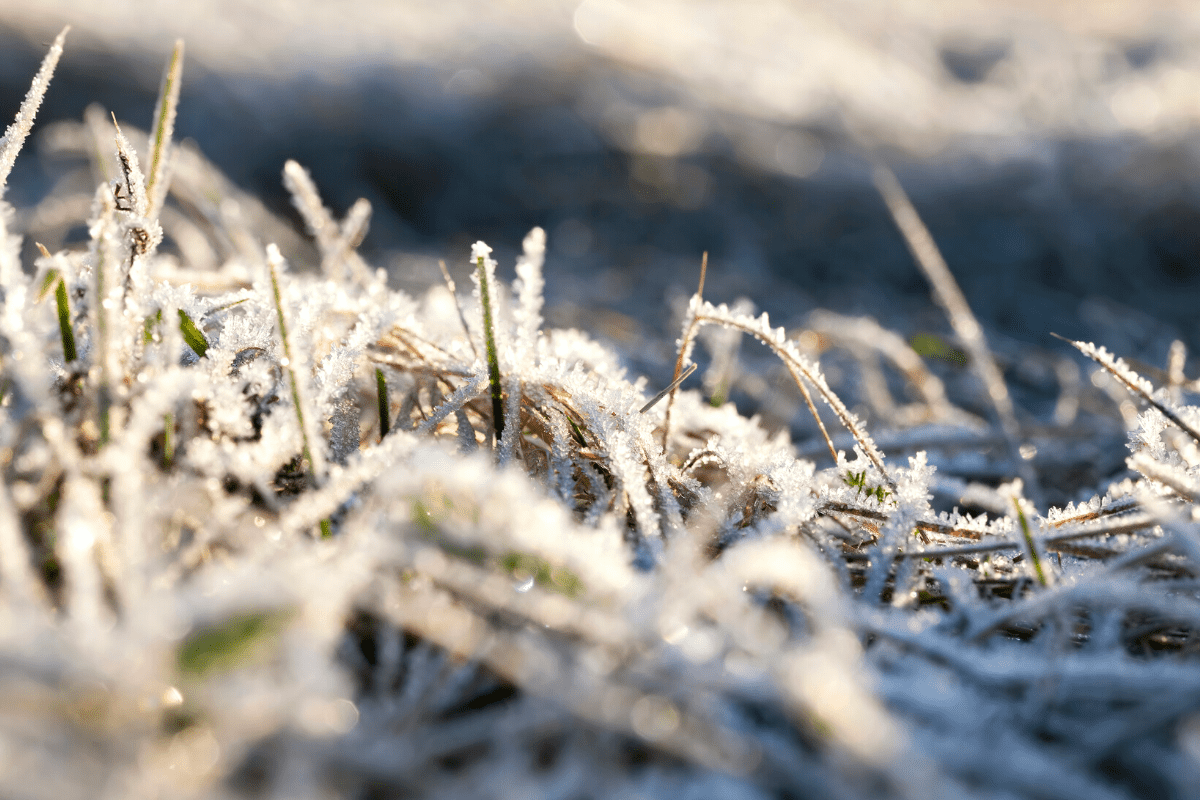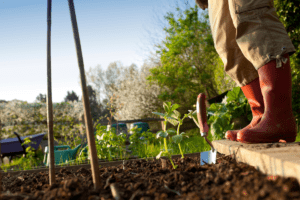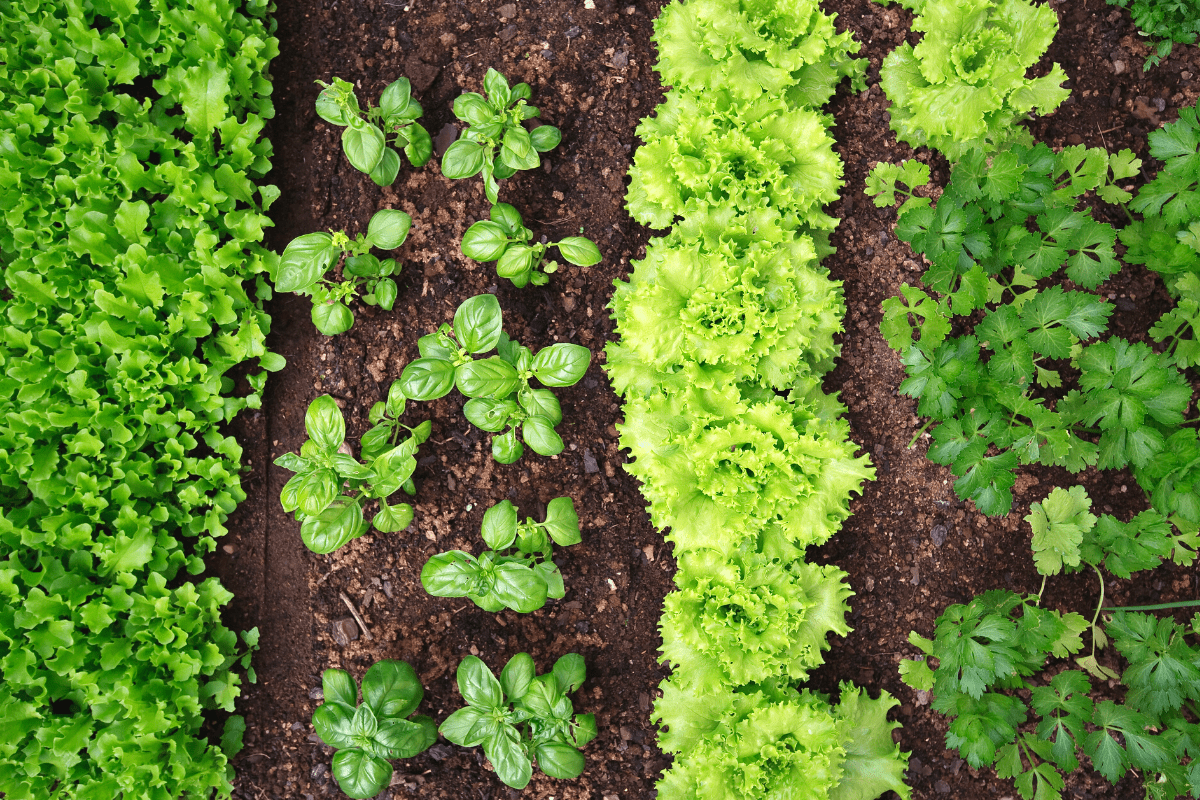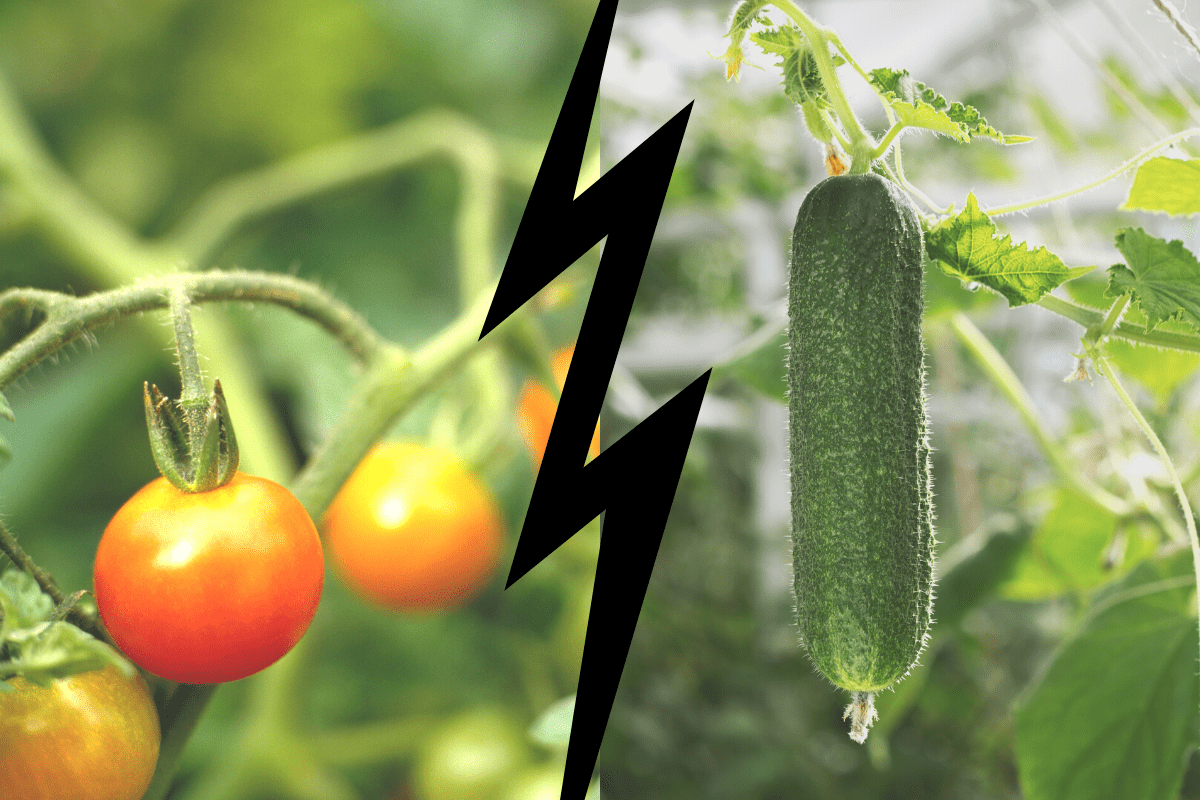To make sure your vegetable garden beds are in good shape next season, you need to winterize them correctly. Preparing your vegetable garden for spring will take some time and effort in the fall but will save you a lot of time in the next year.

When should you winterize your garden?
An old farmer’s rule says that the garden should be ready for the winter by October 21st.
However, you don’t have to take this date too seriously. Fall weather varies from year to year and differs significantly from region to region. While frost is already set in a cold area, other places with a wine-growing climate are still almost as warm as late summer.
So, no need to be set on a fixed date, instead follow the weather.
Usually, the best time to winterize your vegetable garden is during the month of October. When the night temperatures slowly approach the frost line, you should make the beds winter-proof at the latest. Once the top layers are frozen, it’s too late.

What to do with your vegetable garden at the end of the season
Cleaning up and preparing your vegetable garden for next year are the most critical tasks at the end of the season. Caring for your soil and protecting perennial plants will make a big difference next spring. You will thank yourself and be off to an easier start.
Here is how to winterize your vegetable garden for next year:
1. Harvest the last vegetables and collect seeds
If you still have some vegetables growing at this point, do a last round of harvesting through your vegetable garden and pick all veggies that are left.
Additionally, if you haven’t done so earlier, now is the time to collect seeds from the remaining vegetables to prepare them for next year. Remove them, let them dry out, and then store them in paper bags.
2. Remove annual plants and all weeds
After the last harvest, all annual plants need to be removed from the garden. Dead left-overs only invite diseases and insects.
Remove all unwanted wild plants and weeds simultaneously, as they would continue to grow over the winter otherwise. That saves work in the spring because the greenery would already be more firmly rooted and has often multiplied.
3. Loosen the soil
While digging up all the beds before winter used to be the gardening standard, today, this only applies in individual cases with particularly hard soil.
Very compacted, clayey soil has to be dug up every 1-3 years, depending on its current condition. These heavy, hard soils tend to be grey and look like cracked concrete when dry.
Prick the soil with the spade and turn over the coarse clods – do not crush them! That way, the frost can penetrate deep and makes the earth crumbly. Moisture is absorbed better, and any plant residues which may have been worked in provide food for the microorganisms in the soil.
You will only have to loosen the clods a little in the spring and level the whole thing again.
Regular and light garden soil only needs to be loosened a little with a digging fork. Then level the bed with a rake and leave it.
If you want to test your soil, now would be the best time to take a sample.
4. Apply compost as organic fertilizer in the fall
Fall is a great time to add a layer of compost to your vegetable garden beds to improve your garden soil over the winter. Preparing your garden soil for next year with compost will not only provide your beds with nutrients in the first place but also improve nutrient uptake over time.
Apart from a layer of compost, and mulch or possibly green manure on top, cleared vegetable garden beds do not require any further synthetic fertilization before winter.

5. Start new garden beds
If you want to expand your garden and add a bed or two for the next season, you should prepare those before winter. Make sure to choose a level spot for your new bed.
- First, you will have to remove the grass. The grass is a keen competitor to your vegetables for light, nutrients, and water and will keep re-growing unless you remove it thoroughly. In addition, overgrown soil often contains wireworms, which are particularly fond of eating potatoes.
- Then, you dig up the soil. Depending on the heaviness of your soil, you might want to dig up to two spades deep. When digging up the deeper layer, you can easily work in manure or compost and provide your soil with healthy nutrients from the start.
- After the digging, you set the bed border. A bed border prevents the surrounding lawn from growing back into your bed. You can build a bed boundary out of stones, wood, or commercially available lawn curbs.
When planning out your garden beds for next year, make sure to consider crop rotation to keep your beds’ soil healthy and full of nutrients.
Here you find a detailed guide on how to start a vegetable garden bed from scratch.
6. Take care of perennial plants in the fall
It is better not to prune your perennials before winter but only before they sprout in spring. Stems and wilted leaves actually serve as additional protection from the cold.
And they are part of the more extensive ecosystem in your backyard. Insects like wild bees overwinter in the leaves and seeds. Birds also search the perennials for seeds in winter.
Not all perennials can survive temperatures below freezing. Some of them might need some extra winter protection. Depending on the type of plants you have, different materials are suitable:
- The root area is usually best protected by a thick layer of mulch.
- Packing plants with garden fleece is a good winter protection for very temperature-sensitive plants.
- Jute bags filled with straw can also be used to insulate plants from freezing temperatures.
But beware, not all plants tolerate the same mulch or packaging material. Make sure to do your research for the individual vegetable plants before deciding what to use.
Ever wondered if cucumbers can grow in winter? Check it out here!
7. Cover vegetable beds and protect the soil
You should cover your vegetable garden in the winter with organic mulch or some sort of plastic like a tarp. Covering the garden beds has many benefits, such as suppressing weeds from growing, protecting the soil and its microbes from frost, and preventing potential erosion caused by snowmelt.
Whether you have raised beds, or a flat garden, a winter cover is necessary. Bare soil should never be left uncovered or unvegetated. The cleared vegetable beds need a protective layer that keeps the soil and its microorganisms from frost and leaching.
The following materials are the best options for winter mulch:
- chopped straw
- fall leaves
- lawn and meadow clippings from the mower
- shredded garden waste
- commercially available mulch fleece or mulch film
- plastic or tarp material
Generally, do not mulch too thick; 2 inches is usually enough for winter. The soil must still be able to “breathe.”
You could also sow a cover crop if you don’t want to cover your vegetable garden beds with organic mulch or plastic. Winter rye, vetch, or clover are perfect for keeping your soil protected during the cold months.
The roots of these plants help minimize soil erosion, break up compacted areas and increase the overall organic matter in your garden beds. Cover plants add nutrients to your soil and enrichen it with carbon from the atmosphere.
Generally, it is recommended to sow cover crops around 4 weeks before the first frost. That way, they have time to grow their leaves and will protect your soil from the cold weather and snow.
Here you find more details and important information on how, when, and what you should cover your vegetable garden with in winter.
8. Clean and store away gardening tools
Collect all used stakes, supports, pots, shovels, rakes, spades, and all other gardening tools and wash them off thoroughly. When needed, treat them with some oil or preservative and store them indoors over winter. That way, everything will stay functional and be clean and ready for the next season in spring.

Conclusion
Preparing a garden bed in the fall means having a head start the following spring. So, even if you don’t use your garden for winter and just let it rest, winterizing flat or raised garden beds is not complicated but essential and will save you a lot of time and effort in the next season.







